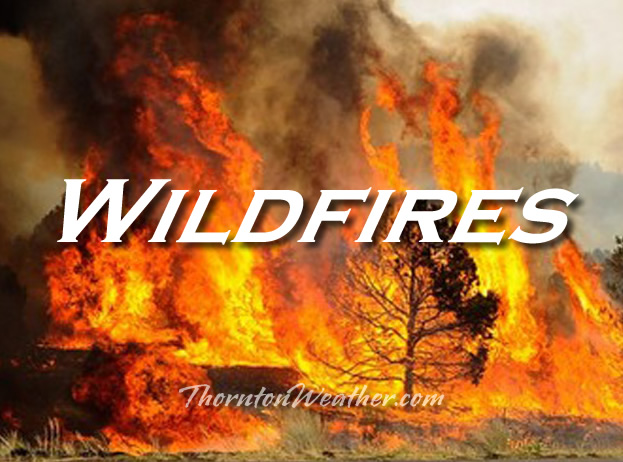 Floods and wildfires are arguably the two most common disasters Coloradans face with numerous such events occurring each year. To better prepare residents for the danger of these disasters, this week is Colorado Flood Safety and Wildfire Preparedness Week.
Floods and wildfires are arguably the two most common disasters Coloradans face with numerous such events occurring each year. To better prepare residents for the danger of these disasters, this week is Colorado Flood Safety and Wildfire Preparedness Week.
Each day this week the National Weather Service will be posting public information statements covering a number of different topics about floods and wildfires. These important messages should be required reading for all Coloradans so they know what to do to prepare for these events and handle them when they occur.
ThorntonWeather.com will be posting each of these messages as a service to our readers. Please check back daily for a new topic.
PUBLIC INFORMATION STATEMENT
NATIONAL WEATHER SERVICE GRAND JUNCTION CO
600 AM MDT FRI MARCH 12 2021
…WILDFIRE SAFETY AND MITIGATION…
During this Colorado Flood Safety and Wildfire Preparedness Week we have discussed floods, flash floods, and how to stay safe when flooding threatens. We also told you that areas burned by wildfires are highly susceptible to flash floods within the first two or three years after the wildfire.
Today we will provide you with information about wildfire safety and mitigation that could save your life and minimize destruction to your personal property.
Colorado experienced some very devastating wildfires in 2013, including the Black Forest Fire, the Royal Gorge Wildfire, and the West Fork Complex which burned over a hundred thousand acres of forest. Two people were killed and over five hundred houses and other buildings were destroyed from the Black Forest Wildfire.
All wildfires need fuel to burn, typically in the form of dry vegetation, as often occurs in forests, grasslands, and cured wheat fields. Tragically, some wildfires also kill people and destroy homes, vehicles, and other personal property. If you live near or within a forest, grassland, or wheat field, there are some actions you can take to minimize your vulnerability to wildfires.
If you are a homeowner, the first defense against wildfires is to create and maintain a defensible space around your home. Defensible space is the area around a home or other structure where fuels and vegetation are treated, cleared or reduced to slow the spread of wildfire. Creating wildfire-defensible zones also reduces the chance of a structure fire spreading to neighboring homes or the surrounding forest. Defensible space also provides room for firefighters to do their jobs when fighting a wildfire.
More information on how to make a defensible space around your home can be found on the Colorado State Forest Service website at http://csfs.colostate.edu/pages/defensible-space.html
During periods of extreme fire danger in forests and rangelands…
…you should avoid being in areas where you might become trapped by a wildfire.
…you should avoid the use of matches or anything else which could ignite a fire.
…make sure that hot parts of motorized equipment, such as mufflers, are not allowed to come in contact with dry grasses or other potentially flammable material.
If you become trapped or cut off by a wildfire, seek shelter in areas with little or no fuel, such as rock slide areas or lakes.
For more information on wildfires and fire safety, please check out the following web addresses…
http://www.srh.noaa.gov/ridge2/fire/
http://www.ready.gov/wildfires
http://www.nifc.gov
Colorado Flood Safety and Wildfire Preparedness Week continues through this Saturday.
JIM PRINGLE
WARNING COORDINATION METEOROLOGIST
WFO GRAND JUNCTION CO
Colorado Flood Safety and Wildfire Preparedness Week
